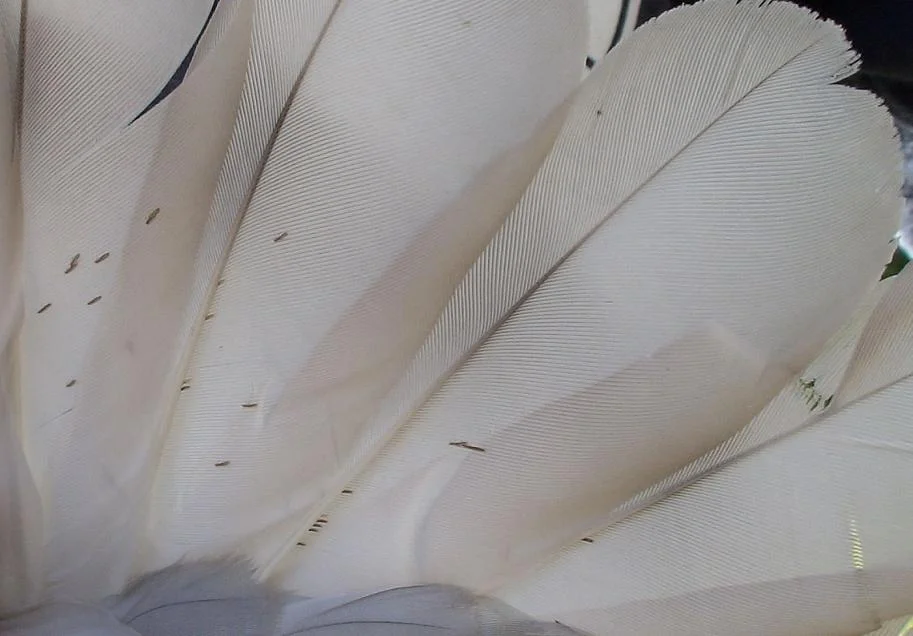
Feather Mites in Breeding Racing Pigeons
Feather Mites in Breeding Racing Pigeons: How to Spot and Stop This Hidden Threat
Feather mites may be tiny, but their impact on your racing pigeons—especially during the critical breeding season—can be enormous. These barely visible parasites can silently undermine breeding success, leading to poor egg fertility, nest abandonment, and even squab neglect. If your breeding pairs are showing signs of stress, reduced mating behavior, or feather damage, mites could be the hidden culprit.
In this blog post, we’ll cover everything you need to know about feather mites in breeding pigeons—from how they spread and signs to look for, to safe, effective treatment and prevention strategies that support optimal breeding outcomes.
What Are Feather Mites?
Feather mites are microscopic ectoparasites that live on the skin and feathers of birds, feeding on keratin and oils. Unlike lice or blood-sucking parasites, feather mites often go unnoticed at first. However, their presence can lead to:
-
Constant irritation and preening
-
Poor feather condition
-
Interrupted rest
-
Decreased mating behavior
-
Nest abandonment
While they don’t typically cause fatal conditions, feather mites create chronic stress, which is especially detrimental during the breeding season when pigeons need calm and comfort to mate, incubate, and raise healthy squabs.
How Feather Mites Affect Breeding Pairs
During breeding season, pairs should be focused on nesting, mating, and squab care. But when mites invade, things can go sideways fast.
1. Reduced Mating Behavior
Feather mites cause skin irritation, especially around the vent, under the wings, and near the tail. This discomfort often makes birds less interested in courtship and mating, leading to fewer eggs laid.
2. Nest Abandonment
A stressed pigeon may refuse to sit in the nest. If one or both mates abandon the nest due to persistent discomfort, the eggs may never hatch—or worse, the chicks may go unfed and die prematurely.
3. Poor Parental Care
Even if squabs hatch, feather mite-infested parents are often too busy scratching and preening to focus on feeding or brooding. This can result in underdeveloped, undernourished, or even dead young.
How Feather Mites Spread in the Loft
Feather mites are primarily spread through direct contact—especially between mates or from parent to squab. They can also transfer via:
-
Shared perches
-
Nesting material
-
Dirty feathers left in the loft
-
Contaminated loft cleaning tools
Humidity and poor sanitation create a perfect environment for mites to multiply. If your loft is warm and poorly ventilated, the infestation can spiral quickly.
Signs of Feather Mite Infestation
Not sure if mites are causing your breeding problems? Look for these tell-tale signs:
-
Excessive preening or scratching
-
Ragged or broken feathers
-
Bare patches, especially under the wings
-
Red or inflamed skin
-
Nest refusal
-
Poor squab growth or feeding behavior
Use a magnifying glass to inspect feathers and under the wings. In some cases, you may even see the mites as small moving specks.
Diagnosing Feather Mites
A vet can confirm the presence of feather mites via microscopic examination of feather or skin scrapings. However, many pigeon fanciers recognize the symptoms and begin treatment proactively—especially during breeding season when time is critical.
Safe Treatment Options for Feather Mites
Here’s the good news: Feather mite infestations are very treatable when addressed early and properly.
1. Topical Anti-Mite Sprays or Powders
Use a pigeon-safe anti-mite spray or powder to treat both birds in a pair at the same time. Focus on areas like under the wings, around the vent, and along the spine. Repeat treatment as directed on the label.
2. Dusting Nest Boxes
Dust nest bowls, corners of the loft, and perch areas with an anti-mite powder. Diatomaceous earth is a natural option many fanciers use—it dehydrates and kills mites without chemicals.
3. Ivermectin Drops (Under Vet Supervision)
In more stubborn infestations, vets may recommend using ivermectin drops applied behind the neck. This should always be done under professional guidance to avoid overdosing or affecting egg fertility.
Sanitation: Your First Line of Defense
Treating your birds without cleaning the loft is like mopping the floor with the tap still running. For full mite control:
-
Replace all bedding and nesting material weekly
-
Disinfect nest boxes after each clutch
-
Sweep and clean feathers and dust from corners
-
Rotate nest bowls and perches
-
Use a mite spray in the loft during the off-season
Always allow disinfectants to dry fully before returning pigeons to the loft.
Preventing Mite Reinfestation
Prevention is far easier than treatment—especially during a demanding breeding season. Here’s how to keep mites away long term:
-
Isolate new birds: Quarantine any new additions for 2-3 weeks and inspect them for mites.
-
Regular health checks: Look for early signs of infestation and act fast.
-
Loft ventilation: Reduce humidity and condensation by ensuring good airflow.
-
Natural additives: Some breeders add garlic or apple cider vinegar to drinking water to support skin health and deter pests naturally.
Should You Stop Breeding During Treatment?
If feather mites are affecting fertility or squab survival, a short breeding break may be wise. Focus on:
-
Resting the breeding pairs
-
Fully clearing the loft of mites
-
Strengthening the birds with vitamins and immune boosters
Once the loft is clear and the birds have recovered, resume breeding with renewed confidence and healthier mates.
Key Supplements for Recovery
After an infestation, your pigeons’ immune systems and feathers need support. Consider:
-
Multivitamin mixes (especially A, D, and E)
-
Mineral blends with zinc and biotin for feather regrowth
-
Probiotics to stabilize gut health post-treatment
-
PHP Immune Boost or similar supplements to build resilience
A strong pigeon recovers faster and will breed better in future rounds.
Final Thoughts: Mites Don’t Belong in a Breeding Loft
Feather mites might not make headlines like viruses or bacteria, but their effect on breeding productivity is real—and often underestimated. By staying proactive with loft sanitation, early detection, and safe treatments, you can protect your racing pigeon pairs from this sneaky pest.


